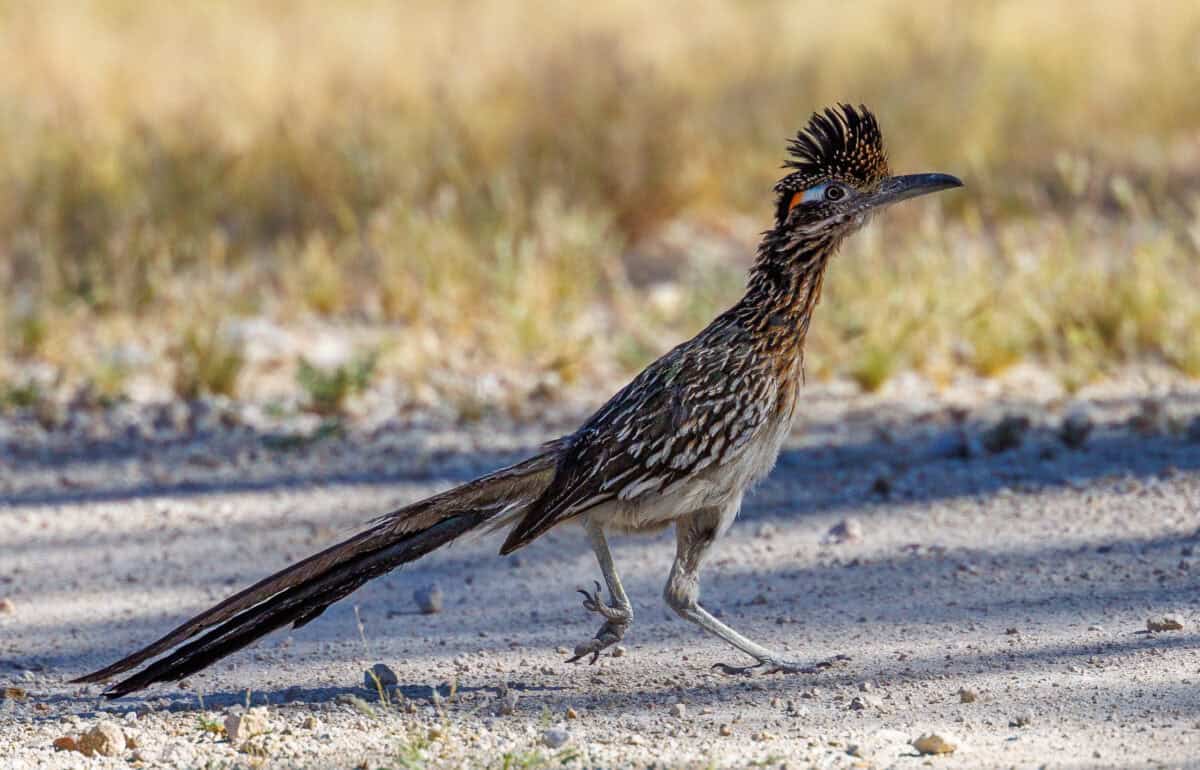The American Southwest stands as a testament to nature’s resilience, where life thrives amidst seemingly inhospitable conditions. This arid region, spanning Arizona, New Mexico, parts of California, Nevada, Utah, Colorado, and Texas, hosts an extraordinary tapestry of wildlife that has evolved remarkable adaptations to survive and flourish in this challenging environment. From the wily coyote to the lightning-fast roadrunner, these iconic creatures have not only captured our imagination through popular culture but represent the incredible biodiversity and evolutionary success stories of desert ecosystems. This article explores the fascinating world of Southwestern wildlife, examining their unique characteristics, behaviors, and the critical role they play in maintaining the delicate balance of their desert habitats.
The Remarkable Coyote: Master of Adaptation
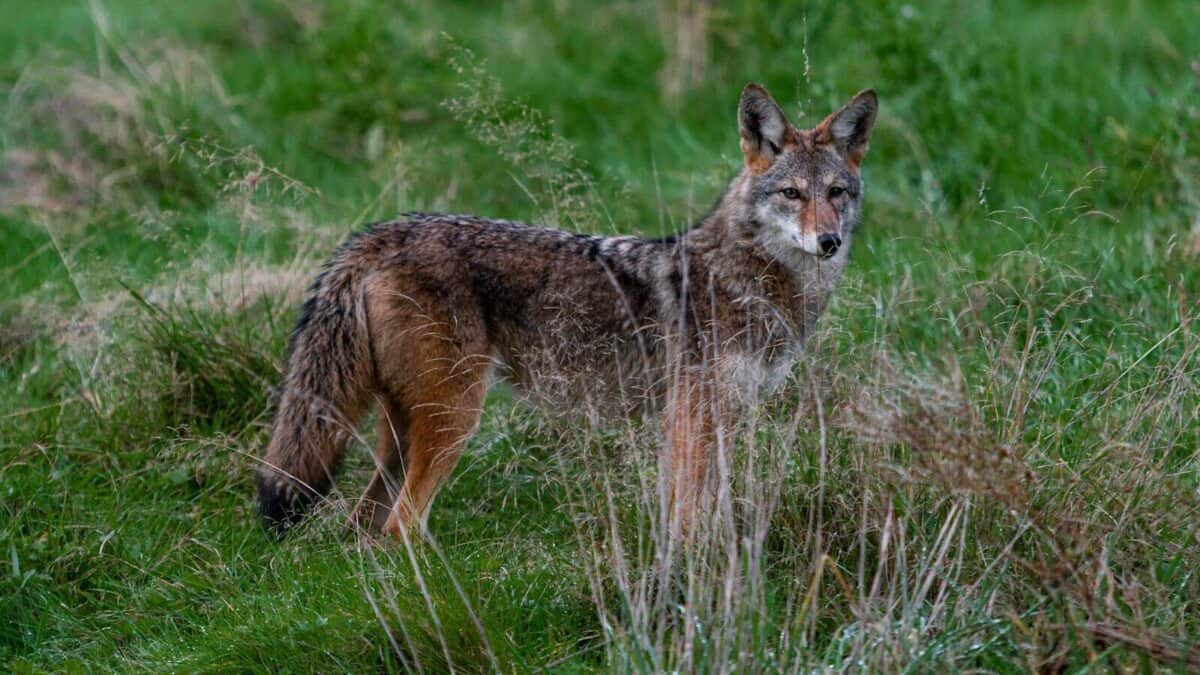
Perhaps no animal symbolizes the resilience of Southwestern wildlife better than the coyote (Canis latrans). These medium-sized canids have not only survived but thrived despite human encroachment, displaying remarkable adaptability across varied landscapes. Unlike many species whose populations have declined with urbanization, coyotes have expanded their range throughout North America in recent decades. In the Southwest, they’ve evolved to require less water than their northern counterparts, with specialized kidneys that concentrate urine and conserve precious moisture. Their diet showcases impressive versatility – from small mammals, birds, and reptiles to fruits, vegetables, and even human refuse in urban areas. This dietary flexibility allows coyotes to persist where more specialized predators cannot. Their intelligence and problem-solving abilities have earned them a prominent place in Native American mythology as trickster figures, while their haunting howls have become an iconic sound of the Southwestern nights.
The Roadrunner: Beyond the Cartoons
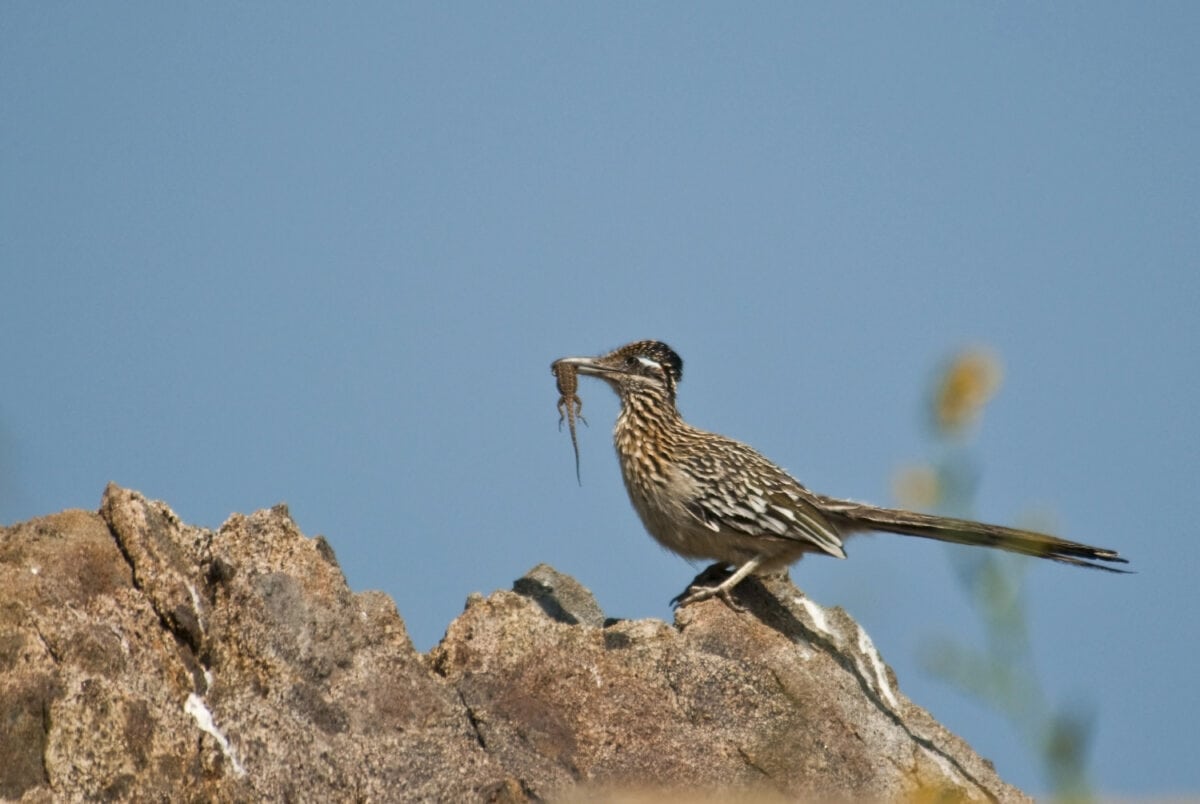
The Greater Roadrunner (Geococcyx californianus) gained worldwide fame through animated cartoons, but the real bird proves equally fascinating. These ground-dwelling members of the cuckoo family can reach speeds of 20 miles per hour – not quite matching their cartoon counterparts but impressive nonetheless. Perfectly adapted to desert life, roadrunners can extract sufficient moisture from their prey to survive without drinking water for extended periods. Their diet primarily consists of lizards, snakes (including venomous species), insects, and small mammals. Perhaps their most remarkable adaptation is their ability to regulate body temperature – basking in morning sun to warm up while exposing bare skin patches behind their feathers to release heat during scorching afternoons. Native to the Southwestern United States and Mexico, these charismatic birds hold cultural significance for many indigenous peoples of the region. The Hopi and Pueblo tribes consider roadrunners sacred, believing they provide protection against evil spirits, while their distinctive X-shaped footprints were thought to confuse malevolent forces about the direction of travel.
The Gila Monster: Venomous Desert Dweller
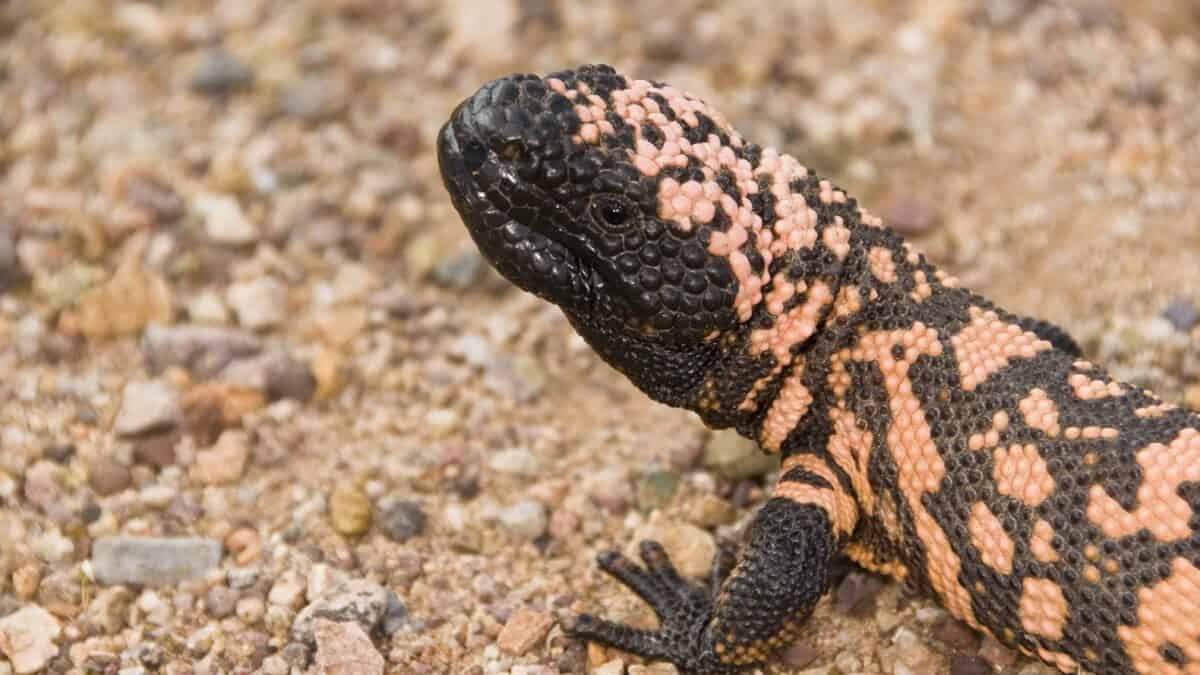
Among the Southwest’s most distinctive reptiles, the Gila monster (Heloderma suspectum) stands out with its orange-pink and black beaded skin pattern and substantial size – growing up to 22 inches long. As one of only two venomous lizards in the world (alongside its close relative, the Mexican beaded lizard), the Gila monster delivers venom through grooved teeth in its lower jaw rather than through hollow fangs like venomous snakes. This prehistoric-looking creature has survived virtually unchanged for millions of years, a testament to its evolutionary success. Spending up to 95% of its life underground to avoid extreme temperatures, Gila monsters emerge primarily during the spring breeding season or after summer rains. Their unique metabolism allows them to store fat in their tails and liver, enabling them to go months between meals. While their venom can cause intense pain in humans, fatalities are extremely rare. More remarkably, their venom contains a compound called exendin-4, which led to the development of a medication for type 2 diabetes. Protected by state laws throughout their range, Gila monsters face threats from habitat destruction and illegal collection for the exotic pet trade.
Desert Bighorn Sheep: Kings of the Canyon

The desert bighorn sheep (Ovis canadensis nelsoni) represents one of the most majestic large mammals of the Southwest, perfectly adapted to the region’s rugged mountain terrain and extreme heat. These iconic ungulates can lose up to 30% of their body weight through dehydration and quickly replenish it when water becomes available – an essential adaptation for surviving in areas where water sources may be ephemeral. Males, known as rams, sport massive curved horns that can weigh up to 30 pounds – nearly 10% of their body weight. These impressive structures serve dual purposes: as cooling systems (with blood vessels close to the surface) and as weapons during dramatic head-butting contests for mating rights. Their specialized hooves feature concave undersides that act like suction cups, allowing them to navigate precarious cliff faces with remarkable agility. Once abundant throughout the Southwest, desert bighorn populations plummeted in the early 20th century due to unregulated hunting, disease transmitted from domestic sheep, and habitat loss. Conservation efforts have helped stabilize and recover populations in many areas, though they remain vulnerable. For indigenous peoples like the Navajo and Hopi, the bighorn holds profound cultural significance, often appearing in rock art and considered spiritual messengers.
The Javelina: Not Your Average Pig
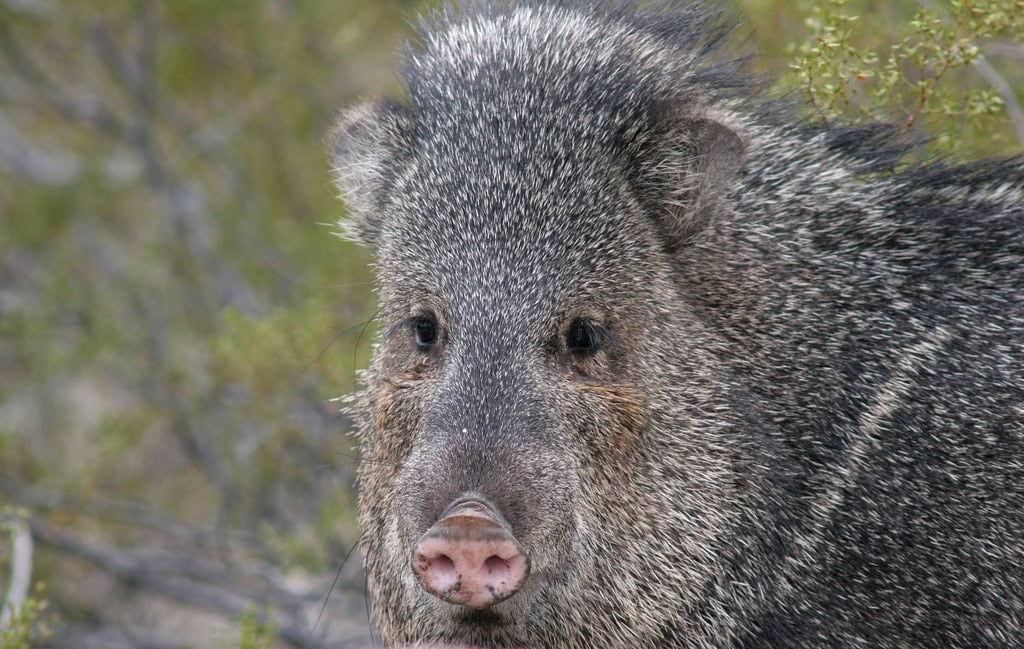
Despite their pig-like appearance, javelinas or collared peccaries (Pecari tajacu) are not true pigs but belong to a distinct family that evolved separately in the Americas. These social creatures typically live in groups of 8-12 individuals, using scent glands beneath their eyes to mark territory and identify family members. The distinctive musky odor produced by these glands has earned them the nickname “musk hogs” and can be detected by humans from considerable distances. Javelinas have adapted remarkably to desert environments, feeding primarily on prickly pear cactus pads, fruits, roots, and tubers – though they’ll opportunistically consume small animals when available. Their specialized digestive systems can process vegetation too tough or spiny for other mammals. With poor eyesight but excellent senses of smell and hearing, javelinas navigate their environment primarily through olfactory cues. They play important ecological roles as seed dispersers and by creating microhabitats through their foraging activities. As urban development expands into natural areas, human-javelina interactions have increased, sometimes leading to conflicts when these animals raid gardens or pet food left outdoors. Despite these occasional tensions, javelinas represent an important component of Southwestern ecosystems and contribute to the region’s unique biodiversity.
The Majestic Golden Eagle: Aerial Predator

Soaring above the Southwestern landscapes, the golden eagle (Aquila chrysaetos) represents one of North America’s largest and most powerful raptors. With wingspans reaching over seven feet and capable of diving at speeds exceeding 150 miles per hour, these birds embody aerial mastery. Unlike their coastal cousin, the bald eagle, golden eagles prefer open country and mountainous terrain typical of the Southwest. Their diet primarily consists of small to medium-sized mammals like jackrabbits, prairie dogs, and ground squirrels, though they occasionally take larger prey including young deer or pronghorn. Extraordinarily long-lived, golden eagles can survive 30 years in the wild and maintain lifelong pair bonds, returning to the same nesting territories year after year. Their massive nests, called eyries, are typically built on cliff ledges or occasionally in large trees, and may be used for generations – some documented nests have reached dimensions of 10 feet across and weighed over a ton. For many indigenous cultures of the Southwest, including the Navajo, Hopi, and Zuni, golden eagle feathers hold sacred significance and are used in important ceremonies. Federal law strictly protects these magnificent birds, though they face ongoing threats from habitat loss, electrocution on power lines, and illegal shooting. Conservation efforts focus on protecting nesting sites and mitigating human-caused mortality factors.
The Sonoran Desert Tortoise: Ancient Desert Survivor

Few creatures embody the patience and persistence needed to thrive in the Southwest better than the Sonoran desert tortoise (Gopherus morafkai). These remarkable reptiles can live 50-80 years in the wild, slowly navigating their harsh environment with evolutionary adaptations refined over millions of years. Their high-domed shells serve dual purposes – providing protection from predators and creating a microclimate that helps regulate body temperature and water conservation. During extreme heat, these tortoises retreat to self-dug burrows that can extend 30 feet into hillsides, creating shelter not only for themselves but for numerous other species. Their specialized bladders function as water reservoirs, storing liquid for use during drought periods – they can lose up to 40% of their body water and survive, a feat that would be fatal to most vertebrates. During winter’s cooler temperatures, desert tortoises enter a state of brumation (reptilian hibernation), slowing their metabolism dramatically. Despite their remarkable resilience, these ancient creatures face numerous threats. Listed as threatened under the Endangered Species Act, their populations have declined due to habitat destruction, illegal collection, and upper respiratory tract disease spread through released captive tortoises. Conservation efforts include habitat protection, public education programs, and regulations against keeping wild tortoises as pets.
The Elusive Mountain Lion: Apex Predator
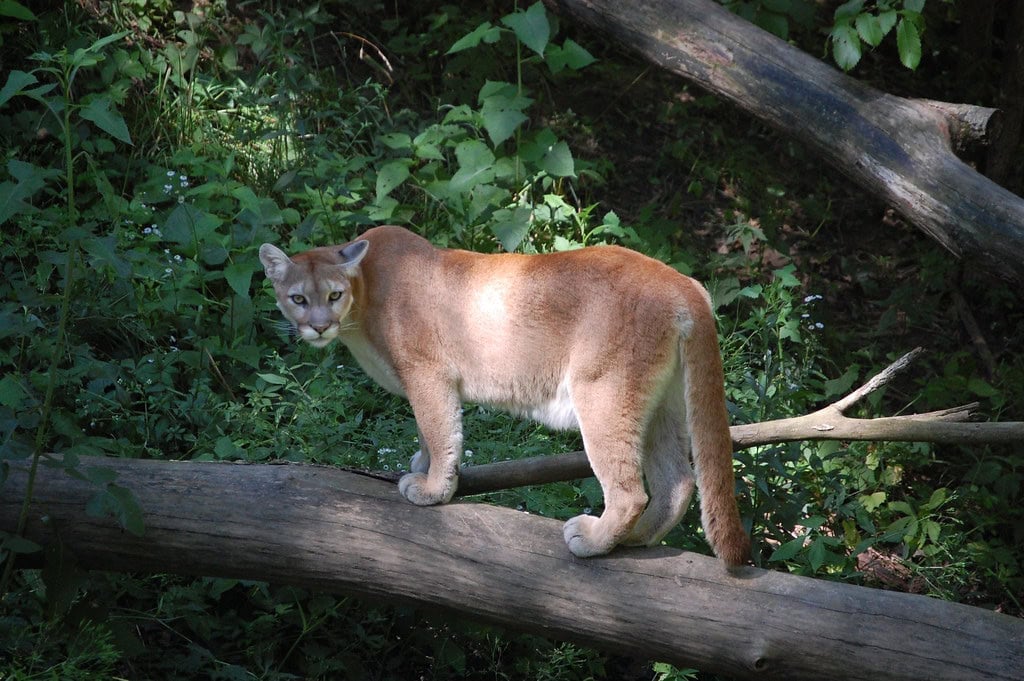
Known by many names – mountain lion, cougar, puma, or panther – Puma concolor represents the Southwest’s largest predator and the most widely distributed wild cat in the Americas. These solitary and secretive cats can adapt to diverse habitats from mountains to deserts, though they prefer areas with dense underbrush and rocky outcrops that provide good hunting coverage. In the Southwest, mountain lions have evolved to require less water than their northern counterparts, obtaining much of their hydration from the blood and tissues of their prey. Primarily hunting deer, these powerful predators can also take down elk, bighorn sheep, and smaller mammals when necessary. Their hunting style relies on stealth and powerful, leaping attacks rather than long chases. Mountain lions maintain enormous territories – males may range over 100 square miles – marking boundaries with scrapes of leaves and dirt mixed with urine. Despite their size and strength, these cats face significant threats from habitat fragmentation, roadway mortality, and conflict with humans. Research shows they play crucial roles in maintaining ecosystem health by controlling deer populations and influencing prey behavior patterns. Conservation efforts increasingly focus on protecting wildlife corridors that allow mountain lions to move safely between isolated habitat patches, reducing genetic isolation and promoting population stability.
The American Black Bear: Adaptable Forest Dweller

Though often associated with forests rather than deserts, American black bears (Ursus americanus) maintain significant populations in the higher elevations of Southwestern mountain ranges. These omnivorous mammals display remarkable adaptability across varied habitats, from the pinyon-juniper woodlands to mixed conifer forests typical of Southwestern mountains. Despite their name, black bears in the Southwest often exhibit cinnamon or brown colorations – adaptations that may provide better camouflage in their environment. Their diet shifts seasonally, consuming emerging vegetation and carrion in spring, berries and insects in summer, and nuts and fruits in fall as they prepare for winter dormancy. Unlike true hibernators, black bears enter a state of torpor during winter months, during which their heart rate and metabolism decrease significantly while body temperature drops only moderately. Female bears give birth during this winter dormancy period, with cubs nursing and developing within the protection of the den. In the Southwest’s sky island mountain ranges – isolated mountains surrounded by radically different lowland environments – black bears face unique challenges as climate change pushes habitable zones upward in elevation. Conservation efforts focus on maintaining habitat connectivity between these isolated populations and reducing human-bear conflicts through proper food storage in recreational areas and educational outreach. For many Southwestern Native American tribes, bears hold significant cultural importance as symbols of strength, wisdom, and healing.
The Pronghorn: America’s Fastest Land Mammal

Often mistakenly called “antelope,” the pronghorn (Antilocapra americana) stands as a uniquely North American species and the continent’s fastest land mammal – capable of sustained speeds up to 35 mph and bursts exceeding 55 mph. This remarkable speed evolved as a response to now-extinct American cheetahs that once hunted them across Southwestern plains. Unlike true antelope, pronghorn shed and regrow their distinctive forked horns annually. Both males and females possess these horns, though female horns remain significantly smaller. Their oversized hearts, lungs, and trachea enable efficient oxygen processing during high-speed runs, while their large eyes positioned on the sides of their head provide nearly 360-degree vision to spot predators at great distances. In the Southwest, pronghorn have adapted to consume various forbs, grasses, and shrubs – including some plants toxic to other mammals. These social animals typically form herds that may number in the hundreds during winter, breaking into smaller groups during spring fawning season. Despite their impressive adaptations, pronghorn populations face significant challenges from habitat fragmentation. Unlike deer, pronghorn rarely jump fences, making barbed wire barriers particularly problematic for their movements. Conservation efforts increasingly focus on fence modifications and creating wildlife corridors that allow these iconic animals to follow traditional migration routes. For indigenous peoples of the Southwest, pronghorn have provided sustenance and materials for thousands of years, featuring prominently in rock art throughout the region.
The Harris’s Hawk: Cooperative Hunters

Among the Southwest’s most distinctive raptors, Harris’s hawks (Parabuteo unicinctus) stand out not only for their striking rust-colored shoulders and legs contrasting with dark brown bodies but for their unique social behavior. Unlike most hawks that hunt solitarily, Harris’s hawks employ cooperative hunting strategies more reminiscent of wolf packs than birds of prey. Family groups typically consisting of 2-7 individuals work together to flush and capture prey, taking turns pursuing rabbits and other small mammals through dense vegetation. This collaborative approach allows them to take down prey larger than any individual hawk could manage alone. Their social structure includes a dominant breeding female, one or more males, and often several helper birds – usually offspring from previous seasons. These helpers assist with hunting, defending territory, and raising young. This cooperative breeding system proves particularly advantageous in the resource-limited Southwestern deserts. Uniquely among raptors, Harris’s hawks practice a behavior called “back-stacking,” where several birds perch vertically atop one another on a single branch or cactus arm – a behavior that may serve social bonding functions while conserving limited perching locations. Their specialized hunting techniques involve “leap-frogging” maneuvers where birds systematically move through habitat, passing each other to maintain continuous pressure on prey. These adaptations have made Harris’s hawks not only successful desert predators but popular among falconers for their trainability and cooperative nature.
The Western Diamondback Rattlesnake: Iconic Desert Serpent
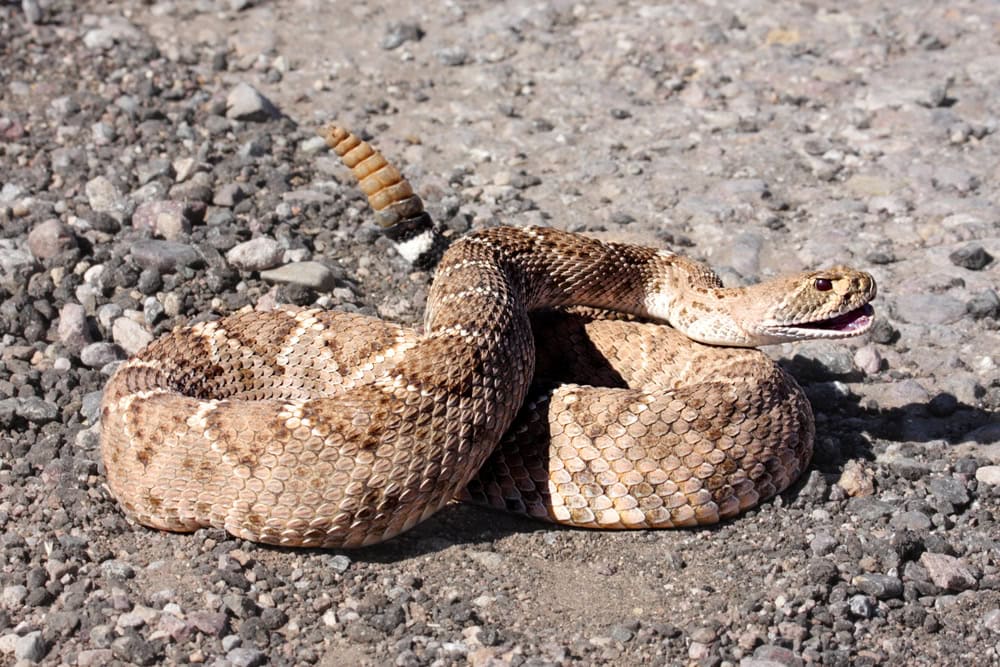
Few creatures evoke the mystique and respect of the Southwestern deserts like the western diamondback rattlesnake (Crotalus atrox). This iconic pit viper, reaching lengths up to 7 feet though typically averaging 3-5 feet, plays a crucial role in controlling rodent populations throughout its range. The distinctive diamond pattern along its back provides excellent camouflage among the dappled light of desert vegetation, while the namesake rattle – composed of interlocking keratin segments – serves as a warning system to potential threats. Contrary to popular belief, rattlesnakes cannot be aged by counting rattle segments, as they add segments with each shedding cycle rather than annually, and segments frequently break off. As pit vipers, diamondbacks possess specialized heat-sensing organs between their eyes and nostrils that detect infrared radiation, allowing them to locate warm-blooded prey even in complete darkness – essentially giving them thermal vision. Their highly efficient venom delivery system evolved primarily for prey acquisition rather than defense, containing a complex mixture of hemotoxic compounds that break down tissues and aid digestion. Despite their fearsome reputation, diamondbacks typically avoid human encounters when possible, striking defensively only when threatened. During winter months, these snakes may gather by the dozens in communal dens to maintain body temperature – a behavior called brumation. Conservation challenges include habitat destruction, road mortality, and deliberate killing despite legal protections in many states. For many Southwestern indigenous cultures, rattlesnakes hold profound spiritual significance, symbolizing both destructive and regenerative powers in traditional belief systems.
- This Bird Migrates 12,000 Miles Without Landing Once - August 18, 2025
- The World’s Dumbest Animals You Won’t Believe How Silly They Are - August 18, 2025
- Do Animals Dream? What Research Reveals - August 18, 2025

